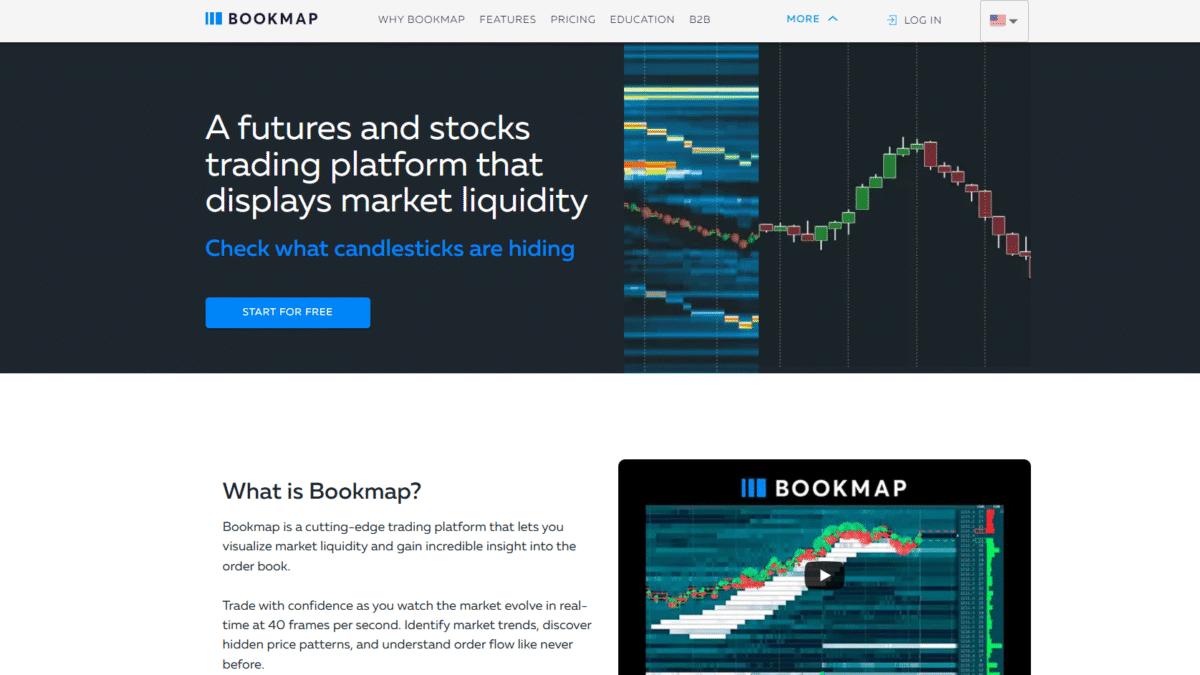
Mastering Liquidity Trading: Top Strategies for Market Profitability
Liquidity trading hinges on spotting where buy and sell orders accumulate, then using that information to enter and exit positions with precision. By focusing on liquidity trading, you gain an edge: you trade where institutional players are most active, avoid thinly traded price zones, and can anticipate sharp moves before they unfold.
Successful liquidity trading demands tools that reveal hidden layers of the order book and real-time order flow. That’s where Bookmap shines. As a futures, crypto and stocks trading platform that displays market liquidity visually, Bookmap lets you watch the market evolve at 40 frames per second. Get 20% OFF Bookmap Today and start seeing the exact price levels where volume is clustering.
Understanding Liquidity Trading
At its heart, liquidity trading is about reading the footprint of buyers and sellers. Instead of relying solely on candlesticks or traditional indicators, you observe:
- The size of resting limit orders at specific price levels
- Imbalances between aggressive buyers and sellers as they hit bids or lift offers
- How incoming volume interacts with support and resistance in real time
By monitoring these elements, liquidity traders locate zones of absorption, identify breakout triggers, and prepare for rapid directional moves.
Core Strategies for Liquidity Trading
1. Order Book Imbalance
Order book imbalance seeks to exploit dominant bid or ask sizes. When bids significantly outweigh asks at a given level, it often signals a short-term price floor. Conversely, large offers stacked above price can cap rallies.
- Look for sudden spikes in limit order volume at one side of the book.
- Enter trades when aggressive market orders start consuming that shelf of liquidity.
- Use tight stops just beyond the flipped imbalance to manage risk.
2. Liquidity Heatmap Reversals
Liquidity heatmap analysis reveals both historical and present liquidity clusters. When price approaches a persistent heatmap “wall” of orders, a reversal is often imminent as that volume absorbs incoming aggression.
- Identify thick liquidity bands on the heatmap as potential turning points.
- Wait for volume bubbles indicating absorption—large market orders hitting that band without price breaking through.
- Enter countertrend once absorption is confirmed and set targets at the next liquidity node.
3. Stop-Run and Sweep Hunting
Stop-run tactics capitalize on clustered stop orders lurking just above or below key levels. When big players sweep those stops, price often overshoots before retracing.
- Map out common stop zones: round numbers, previous highs/lows, and option strike levels.
- Watch for sudden volume surges that indicate stops are being taken out.
- Fade the exhaustion move, anticipating a swift retracement into the core trading range.
4. Scalping on Volume Bubbles
Scalping with volume bubbles focuses on short, quick entries as volume clusters spike. Volume bubbles plot trade size and aggressiveness, highlighting where momentum is strongest at the micro timeframe.
- Wait for a large volume bubble at or near a breakout threshold.
- Enter as soon as the bubble triggers a sustained price push, and ride it for a few ticks.
- Keep hold times under a minute and maintain strict stop placement just below the bubble’s origin.
5. Mean Reversion at Liquidity Gaps
Liquidity gaps—price zones with minimal resting orders—often trigger swift moves into those voids before reverting. Traders use mean reversion to capture that back-fill action.
- Spot sudden price jumps that leave a visible “gap” on the heatmap.
- Short the breakout initial move, aiming for the fill of that gap as liquidity is scarce.
- Confirm with diminishing volume bubbles as price moves further from the mean.
How to Execute Liquidity Trading with Bookmap
Bookmap’s suite of tools transforms raw order book data into intuitive visualizations:
- Liquidity Heatmap: Watch how limit orders accumulate and dissipate over time so you can pinpoint true support and resistance.
- Volume Bubbles: Instantly see where the largest market orders are hitting, revealing aggressive buying or selling in real-time.
- Best Bid & Offer: Track the spread and how incoming volume interacts with it, helping you detect exhaustion and absorption.
- Nanosecond Zoom: Dive into a micro timeframe with video-game-like FPS to catch fleeting liquidity opportunities.
By combining these features, you craft a systematic approach to liquidity trading. Get 20% OFF Bookmap Today and start executing with unparalleled market insight.
Risk Management for Liquidity Traders
No strategy is complete without disciplined risk controls. When trading around liquidity zones:
- Use small position sizes relative to account equity.
- Set stops just beyond key liquidity levels, ensuring losses are minimal if the market moves against you.
- Monitor open orders and partial fills—avoid over-leveraging into a thin book.
Advanced Tips for Liquidity Trading Mastery
Adaptive Order Placement
Adjust your limit order entries based on live heatmap conditions. If heatmap turns pale at a level, reduce size; if it glows bright, you have more confidence in support or resistance.
Combining Technical Context
Overlay traditional indicators—moving averages or VWAP—to validate heatmap signals. Liquidity trading becomes even more robust when confluence zones align.
Session-Specific Strategies
Each trading session exhibits unique liquidity profiles. Study the opening auction, lunch doldrums, and closing prints to tailor your approach to day-specific liquidity rhythms.
Conclusion
By mastering liquidity trading, you position yourself at the heart of market action, anticipating large-scale flows and executing ahead of major moves. Bookmap brings this edge within reach through its dynamic heatmaps, volume bubbles, and real-time order book transparency. Harness these tools, apply the strategies outlined above, and manage risk methodically.
Get 20% OFF Bookmap Today and elevate your liquidity trading game to new heights.
